Understanding the nature is one of the desires of human beings. The basic science to study the nature make our life more interesting. High energy physics(HEP) is one of the fields of basic science whose goal is to understand the ultimate structure of the matter, force, space and time. For the purpose HEP scientists have built world-wide-system of information sharing which may be considered as an example of successful Society 5.0 community. Cutting edge technologies that ranges from high sensitivity sensors, high quality beams, and advanced computing technology for deeper understanding of the nature are also highly useful for the other fields of technology and our daily life. We will present technologies from HEP and related field in the context of Society 5.0 and SDGs.

Illustration by Yukihito Morikawa
Speakers

- Yu Nakahama
- Associate Professor, Nagoya University
- I am a particle physicist, revealing the origin of our Universe using particle accelerators at KEK(Tsukuba) and CERN(Geneva).
PhD at U. Tokyo(2009). PD at CERN(2011-16). Associate professor at Nagoya U.(2016-)."Innovations from Basic Research - High Energy Physics"
In this talk, I will highlight historical scientific achievements from High Energy Physics, leading to the Novel Prizes. In exploring such frontiers of science, we often pushed the limits of technologies beyond industry standards. I will overview knowledge transfer from our innovative technologies, and various applications to our daily lives such as WWW. More could lead to more breakthroughs in the future.

- Maurizio Pierini
- PhD, Research Staff @ the European Center for Nuclear Research (CERN)
- I am working on Deep Learning applications for particle physics at CERN. I am interested to power our searches for new phenomena using Artificial Intelligence. In my talk, I will review how, after the disaster of WWII, particle physicists organized themselves in a no-border multi-cultural open community. In this context, they push the boundary of human knowledge while developing new technologies to make society progress. Since the ‘80s, we heavily use Machine Learning to new discoveries, notably for the Higgs boson discovery of 2012. We use what we learned to help others in facing their challenges, e.g., to improve medical diagnosis, to promote big-data approaches to problems in society.

- Kataoka, Jun
- Professor, Waseda University, Faculty of Science and Engineering
- Dr. J. Kataoka graduated School of Science, major in physics, University of Tokyo in 2000, where he earned doctoral degree in science. He was an assistant professor at Tokyo Institute of Technology between 2001 and 2008, an associate professor at Waseda University until 2013. He is currently a professor at Waseda University, Faculty of Science & Engineering.
"Spectral Photon Counting CT (SPCCT) as a new diagnostic tool for medical innovation"
X-ray CT is a key imaging technique in modern medicine, however, radiation dose is so high that use of CT to children and pregnant women is sometimes limited. Moreover, conventional CT provides only “black and white” images because output pulses are severely piled up. In this talk I will review a novel, SPCCT system for future innovation. SPCCT may reduce radiation dose up to 1/100 of conventional CT, also provides color images by ultra-fast photon counting techniques developed in elemental particle physics.

- Haba, Hiromitsu
- Group Director, RI Application Group, Nishina Center for Accelerator-Based Science, RIKEN
- Hiromitsu Haba received his Ph.D. from Kanazawa University in 1999. In the following years, he worked at Japan Atomic Energy Institute as Postdoctoral Researcher (1999–2001), and at RIKEN as Special Postdoctoral Researcher (2002–2004), Research Scientist (2004–2006), Senior Research Scientist (2007–2010), and Team Leader (2011–2017). Since 2018, he has been in the current position. His scientific interests are nuclear and radiochemistry in general.
"RI production – Chemistry of new elements to diagnosis and treatment of cancer –"
We have been developing production technologies of more than 100 radioisotopes (RIs) using the heavy-ion accelerators at the RIKEN RI Beam Factory. The RIs are useful for application studies from chemistry of new elements to diagnosis and treatment of cancer.

- Ono Kanta
- Associate Professor, Institute of Materials Structure Science, High Energy Accelerator Research Organization (KEK)
- Dr. Kanta Ono received his Ph.D. from the University of Tokyo in 1996.
He was an assistant professor at the University of Tokyo between 1996 and 2003.
He is currently an associate professor at High Energy Accelerator Research Organization (KEK)."Materials Informatics - Materials innovation with AI -"
Global warming and the depletion of fossil fuels and scarce resources are fundamental issues in society. The realization of a sustainable world is an urgent issue that should be tackled by the international community. The development of innovative new materials is an important theme that directly leads to solving the problem. A new technique called Materials Informatics (MI), which utilizes artificial intelligence (AI) technology, is attracting attention bringing innovation to materials development. I will introduce the current status and future trends of MI.
Keywords
basic science, medical application, material development, information technology
自然を理解することは人間の欲求の一つであり、基礎科学は自然を追求することで、人間社会を豊かにします。KEKで行われてる高エネルギー物理学はこの中でも、物質、その間に働く力、空間や時間の究極の構造を理解しようとするものです。このような目的には、Society 5.0 でうたわれている、高度な情報共有によって世界の研究者をつなぐことが必要です。また、基礎科学のために開発された技術は、目的を達成するために、SDGsのためにも使うことができます。高エネルギー物理、原子核物理、宇宙物理、物質・生命の研究から派生する技術を Society 5.0, SDGs の観点からとらえます。
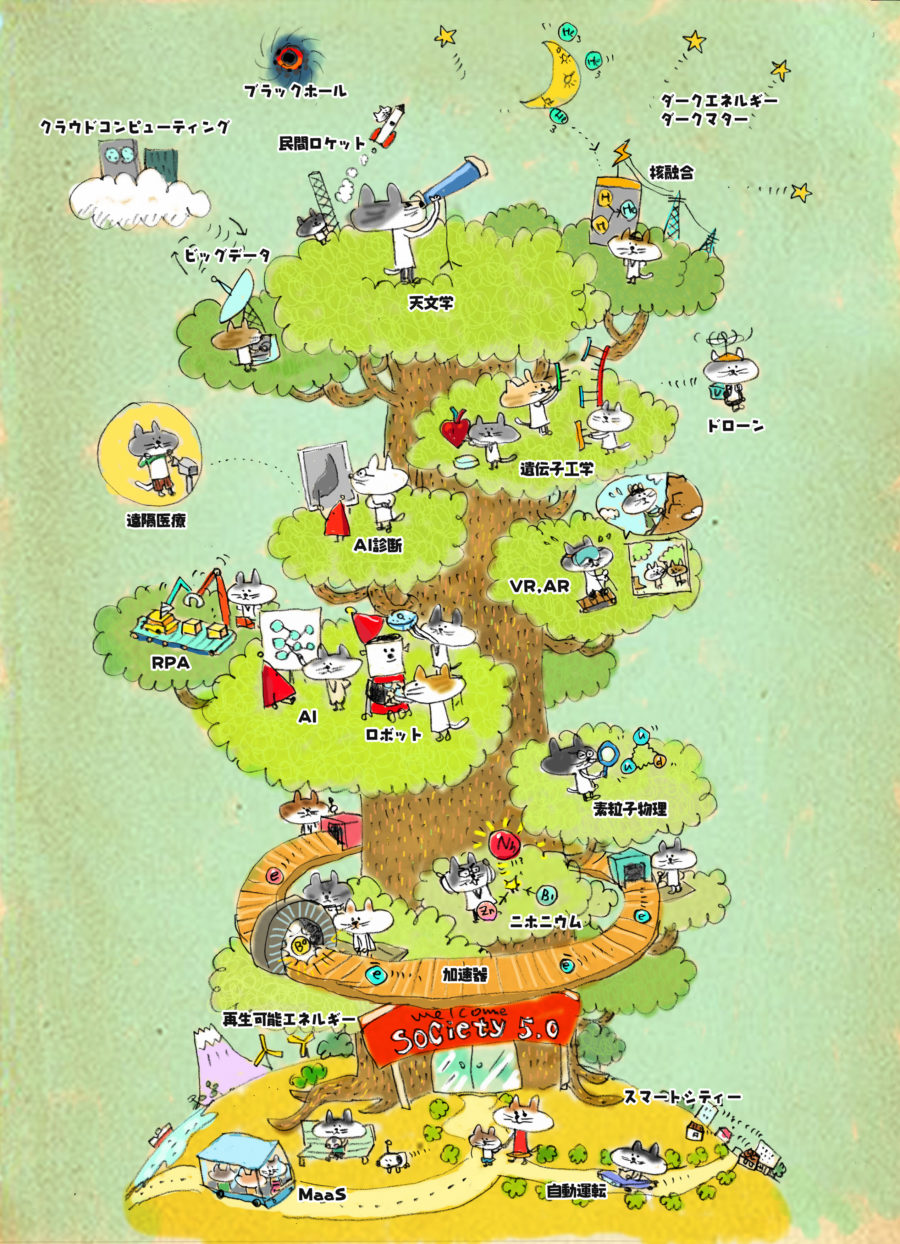
イラストレーター:森川幸人
登壇者
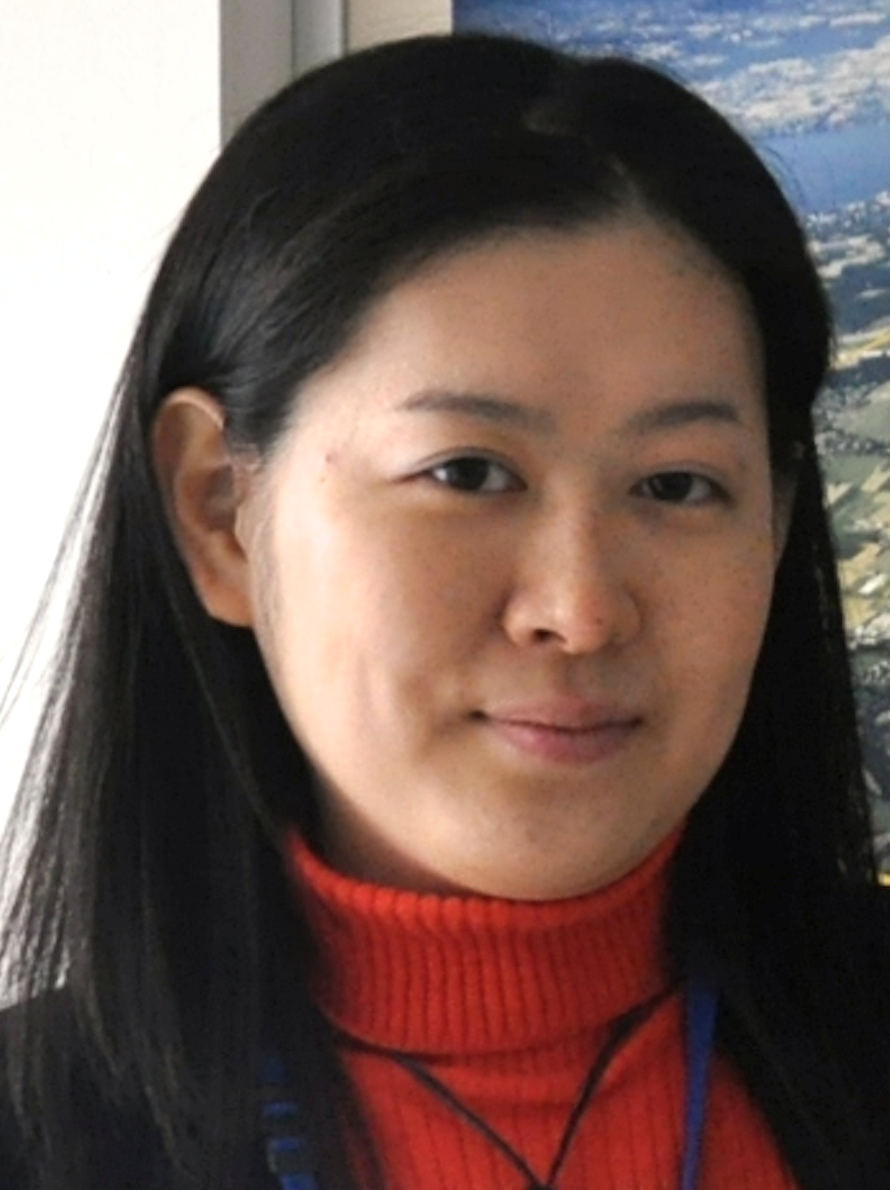
- 中浜 優
- 名古屋大学 准教授
- 素粒子物理の研究者です。KEK(つくば)やCERN研究所(ジュネーブ)にある高エネルギー粒子加速器を用いて、物質の根源や宇宙の起源を解明しています。特に、新たな物理を開拓しています。2009年東大物理学教室でPhDを取得. CERN研究員を経て、2016年から現職 名古屋大准教授。
「基礎科学研究がもたらす技術革新 − 高エネルギー物理学の最前線から」
本講演では、まず高エネルギー物理学における歴史的大発見を紹介します。小林益川理論の実証(KEK)やヒッグス粒子の発見(CERN)など、近年のノーベル賞を導いたものです。このような最先端の基礎科学を探求するためには、業界標準の技術限界を超えた研究開発がしばしば必要となります。エレクトロニクス、半導体検出器、ソフトウェア、計算機、ネットワークなど多岐に渡ります。得られた技術革新のいくつかは、技術移転として、日々の生活に応用されています。WWW など、その例を紹介します。このような進歩は将来も続くでしょう。

- Maurizio Pierini
- PhD, Research Staff @ the European Center for Nuclear Research (CERN)
- ヨーロッパ中央原子核研究所に置いて機械学習の応用的研究をしています。AIの新しい現象を探す我々の探索に活用することに興味を持っています。私の講演では、破滅的な第二次世界大戦ののち、どのように、素粒子物理学が、国境のない多文化の開かれた共同体として再構成されたかについてお話します。それに伴って、社会を発展させる新しい技術が開発され、それが人類の知識を広げていきました。80年以降我々は機械学習を新現象の発見のために使っています。その一例が2012年のヒッグス粒子です。また私たちの開発して技術は、医療や社会問題へのビッグデータからのアプローチなど、困難に直面する他分野の課題を解決するためにも使われています。
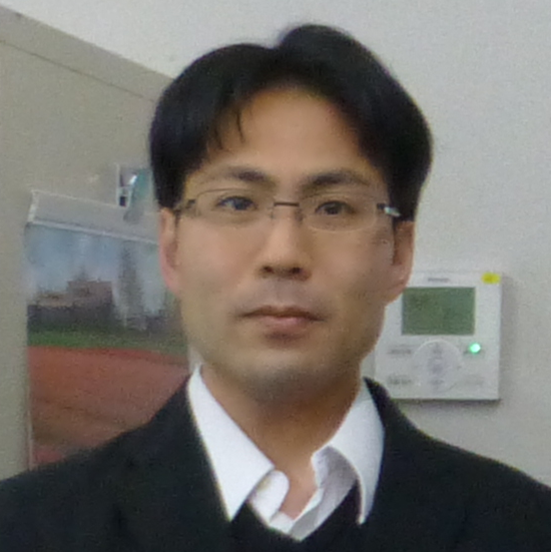
- 片岡 淳
- 早稲田大学理工学術院先進理工学研究科 教授
- 2000年東京大学大学院理学系研究科博士後期課程修了. 博士(理学). 京都大学(学振PD研究員), 2001年東京工業大学助手. 2007年同助教. 2009年早稲田大学理工学研究所准教授, 2014年より現職. 領域横断型の放射線イメージングの研究と教育に従事
「フォトンカウンティングCT がもたらす医療診断イノベーション」
X線CTは現代医療の根幹をなすイメージング技術であるが、被ばく量の多さから妊婦や子供への多数回にわたる使用は躊躇される。高レート下では信号を電流積分で読み出すため、CT画像はエネルギー情報を持たず白黒となる。素粒子・原子核実験が得意とするフォトンカウンティング技術を応用すれば、個々のパルスごとにエネルギーを弁別し、CT画像に色を与えることができる。本講演では従来CTの1/100の低被ばくで撮影可能な、革新的カラーCTの展望と開発動向について紹介したい。
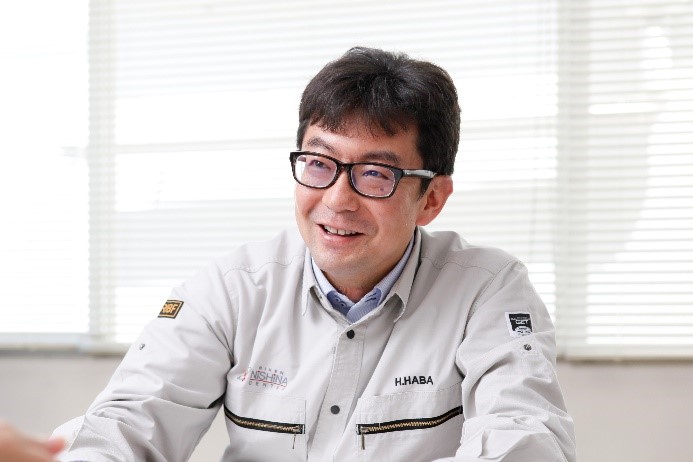
- 羽場 宏光
- 理化学研究所 仁科加速器科学研究センター RI応用研究開発室 室長
- 1999年金沢大学大学院自然科学研究科修了,博士(理学).同年日本原子力研究所博士研究員.2002年理化学研究所(理研)に基礎科学特別研究員として入所.2004年研究員,2007年専任研究員,2011年チームリーダーを経て,2018年より現職.専門は核化学,放射化学.
「RI製造-新元素の化学からがんの診断治療まで¬-」
ラジオアイソトープ(RI)は,トレーサーや放射線源として,物理学,化学や生物学の基礎研究から,工業,農業,医療などの応用分野にわたって幅広く利用されています.我々は,理研RIビームファクトリーの重イオン加速器を用いて,これまで100種以上の有用RIの製造技術を開発してきました.本講演では,新元素の化学からがんの診断・治療まで,様々な応用研究に役立つRIについて解説します.
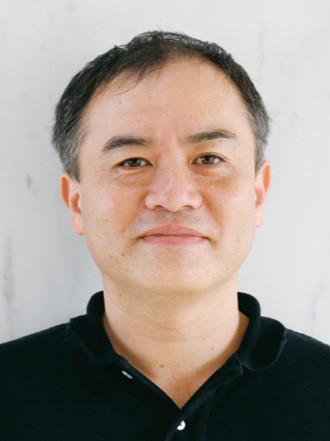
- 小野 寛太
- 高エネルギー加速器研究機構 物質構造科学研究所 准教授
- 1996年東京大学大学院理学系研究科博士後期課程修了. 博士(理学).
1996年東京大学助手. 2003年高エネルギー加速器研究機構助教授, 2007年より現職.
量子ビームを活用した材料研究に従事「マテリアルズ・インフォマティクス - AI 技術を活用した次世代の材料開発 -」
地球温暖化や化石燃料・希少資源の枯渇など地球環境・資源問題への関心の高まりを背景に、温室効果ガス削減のため化石燃料を利用した自動車を電気自動車などの次世代自動車へと転換するEVシフトなど、持続可能な世界の実現に向けた取り組みが世界規模で進められている。持続可能な世界の実現は喫緊かつ国際社会全体で取り組むべき課題であり、革新的な新材料の開発は課題解決に直接つながる重要なテーマである。材料開発にイノベーションをもたらす技術として、人工知能 (AI) 技術を活用したマテリアルズ・インフォマティクス(MI)と呼ばれる新手法が注目を集めている。講演では MI の現状と将来動向について紹介する。
キーワード
basic science, medical application, material development, information technology